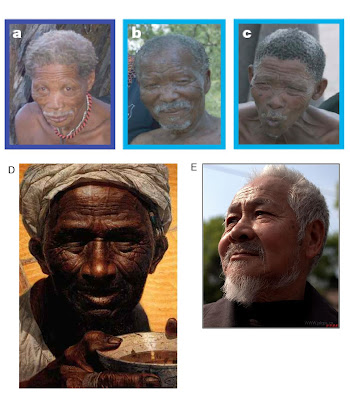 The maximum genetic diversity (MGD) hypothesis considers the molecular clock and the neutral theory incorrect for macroevolution. Thus the genetic relationship or SNP diversity data among human races has yet to be correctly interpreted. We are presently working on a correct one based on the MGD hypothesis.
The maximum genetic diversity (MGD) hypothesis considers the molecular clock and the neutral theory incorrect for macroevolution. Thus the genetic relationship or SNP diversity data among human races has yet to be correctly interpreted. We are presently working on a correct one based on the MGD hypothesis. | | Europeans | Africans | East Asians |
| Eye color brown | | + | + |
| Skin color black-brown | | + | + |
| Hair color black | | + | + |
| Full lip | | + | + |
| Nose wide/low | | + | + |
| Cheekbones large | | + | + |
| Chin less protruding | | + | + |
| Broad face | | + | + |
| Mandible angle | | + | + |
| Teeth larger | | + | + |
| Less hairy | | + | + |
| Brow ridge | Large (primitive) | In between | small |
| Skull length/shape | Long and narrow | In between | Short and wide |
| Shovel teeth | 5% | In between (10%) | 80% |



